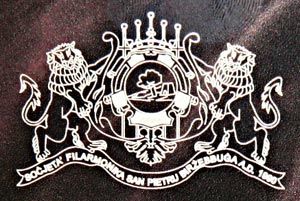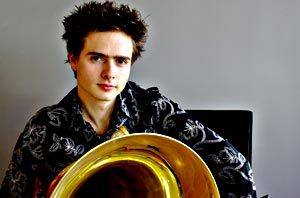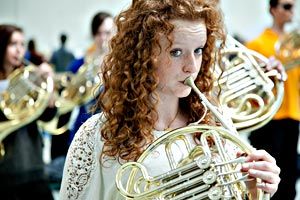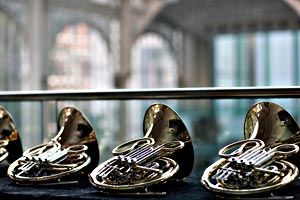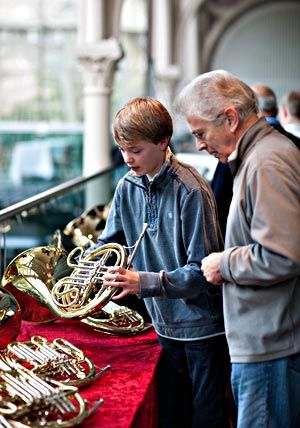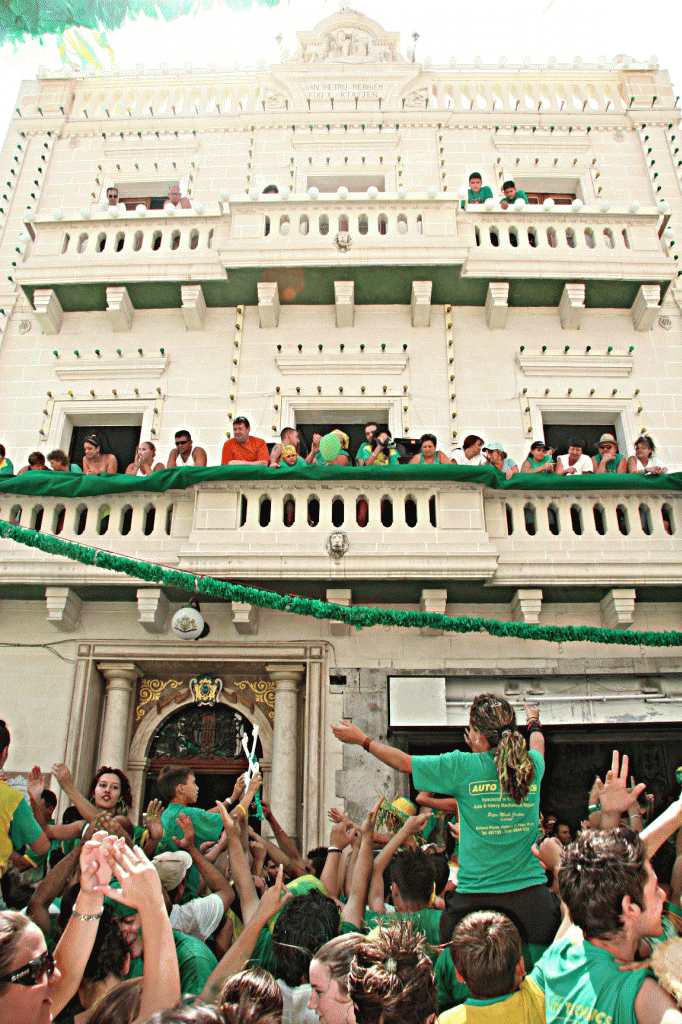The Piano – Dig It! (Dean Sorenson, 2003)
The Piano – Dig It!
by Dean Sorenson
In this series of articles we are looking at the different instruments of the jazz rhythm section. Previous articles have addressed the bass and drums. In this issue we look at the role of the piano in more detail and give you some tips for helping young pianists. As always, listening to the masters will provide the clearest example. Take advantage of the discographies included in the Standard of Excellence Jazz Ensemble Method or the Standard of Excellence Jazz Combo Session Director Scores.
The piano can perform a variety of roles in a jazz rhythm section. The bass provides the most basic harmonic function by playing the roots of the chords. The drums provide the basic rhythmic function by playing rhythm patterns that are consistent with the groove of the piece. The piano ultimately has to fit into this mosaic by contributing a blend of harmonic support (through chords) as well as rhythmic support (through comping rhythms).
Comping is the term used to describe what the pianist is doing most of the time when part of a jazz rhythm section. The term comes from the words COMPose (since the player is creating the part on the spot), and acCOMPany (since the piano is serving as an accompanist to the soloist). Using chord symbols and the groove provided by the bass and drums, the experienced pianist creates chord voicings based on the chords given in the music (harmonic function), and plays them in rhythms that compliment the ensemble (rhythmic function). It is important to understand this dual role that the piano plays in the rhythm section. If either the harmonic or the rhythmic function is ignored, the groove in the rhythm section will suffer.
The example above refers to an experienced pianist, but what if a piano player is new to jazz or new to the piano? Many young pianists have been taking lessons from Mrs. Clinkscales down the street since they were toddlers. They can knock out a Mozart piano sonata at the drop of a hat, but they curl into a shell when presented with chord symbols. Many charts now include piano voicings that are written out, and this is obviously of great help to younger students. The example below is from the Standard of Excellence Jazz Combo Session piano accompaniment. Note the chord symbols and written voicings. The top staff is a melody cue that the pianist can use to follow or play along with the melody.

It is important for the pianist to realize that even though the harmonic side of the equation is covered, the rhythmic side is just as important. Attacks should be thought of as slightly accented most of the time. Young players, especially those that are inexperienced, tend to shy away from the keyboard, as they are unsure of whether or not they are playing correctly. This is a perfectly natural response, and we see the same response from wind players who do not put enough air through their horns on passages they are not yet comfortable with. While being careful that the pianist doesn’t pound on the keys, encourage your pianist to always “dig in,” and to be less afraid of playing an incorrect voicing. Give them the same dictum that the band gets, “If you are going to make a mistake, let me hear it!”
It has been my experience that classically trained pianists use the sustain pedal on just about everything. The sustain pedal, unless used in the correct way, can be a surefire groove killer in a rhythm section. The “wash” of sound that is created with the pedal lends a very muddy character to the rhythm, and this DOES NOT compliment what the bass and drums are trying to accomplish. Inexperienced players should avoid the sustain pedal altogether, regardless of the style of the piece. This will ensure crisp releases of the chords that will better compliment the style of attack described above.
Pianists that are new to the keyboard face the additional challenge of learning instrumental technique. They will, of course, be able to take advantage of the written voicings and should always be playing in a rhythmic way. If the written voicings are too thick for a young player to grasp, some notes can be left out of the voicing. The most important notes of a chord voicing are the third and the seventh (remember that the bass is playing the root), and these generally occur in the left hand. You may need to give the player some assistance in finding these pitches. No matter how many notes of a voicing a pianist plays, they should always “dig in” to the keys and play in a way that compliments the bass and the drums.
__________
Dean Sorenson is a prolific and highly sought after composer, trombonist, and clinician. His most recent publication, the Standard of Excellence Jazz Ensemble Method (co-authored with Bruce Pearson), is fast becoming a “must-have” for developing jazz ensembles.
Dean holds degrees from the University of Minnesota and the Eastman School of Music and was recently appointed Interim Director of Jazz Studies and Performance at the University of Minnesota-Minneapolis. He spent two years touring the United States and Japan with the Glenn Miller Orchestra, playing trombone and writing many arrangements for the band. He maintains an active freelance schedule, playing for touring shows and a wide variety of local groups.
Recent commissions have come from the Airmen of Note, Proteus 7, and the Penfield Music Commission Project in Penfield, NY. His compositions and arrangements including the Standard of Excellence Jazz Ensemble Method, are published by the Neil A. Kjos Music Company.
Copyright © 2003 Neil A. Kjos Music Company. All rights reserved. Spring 2003, Volume 7.
